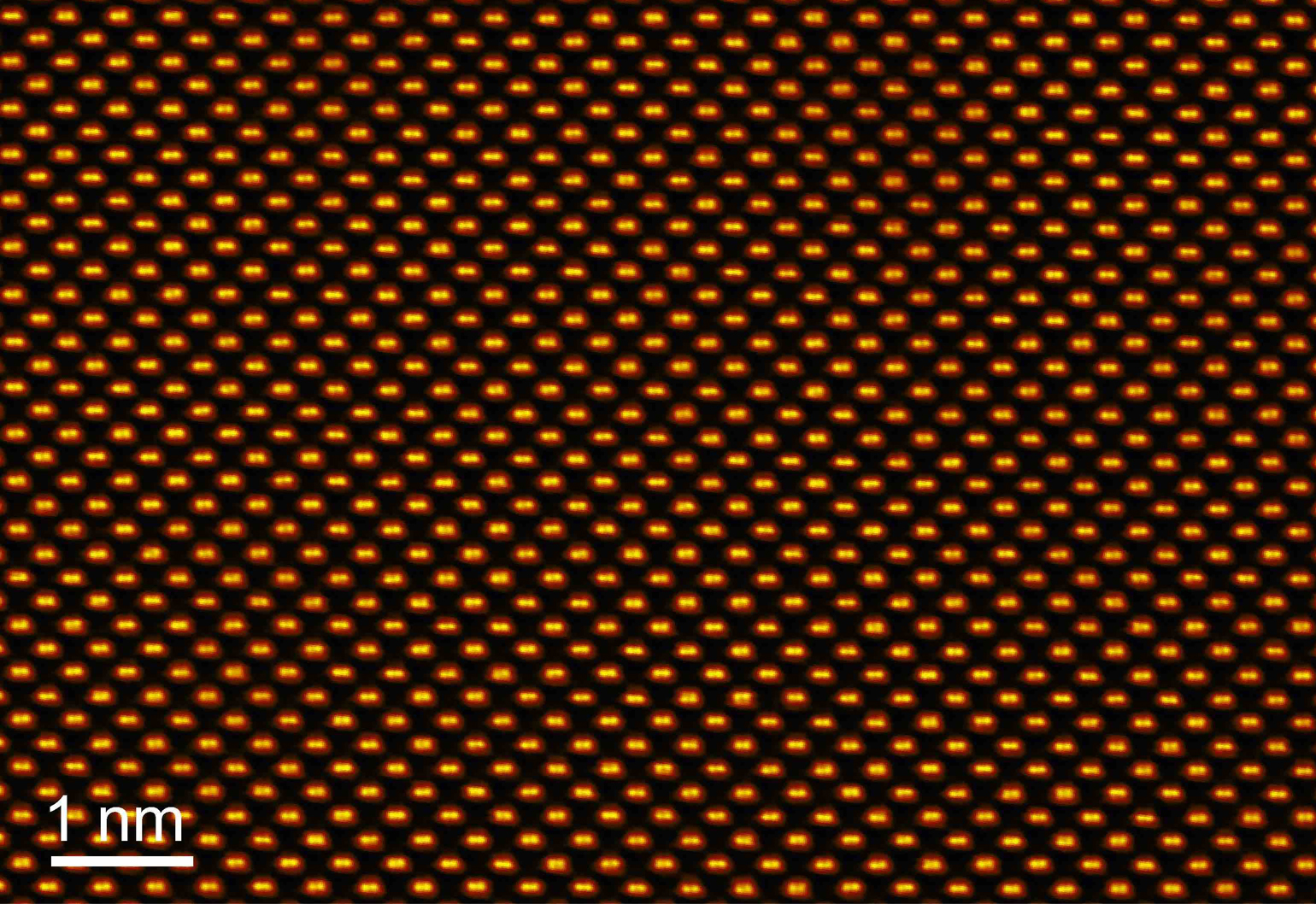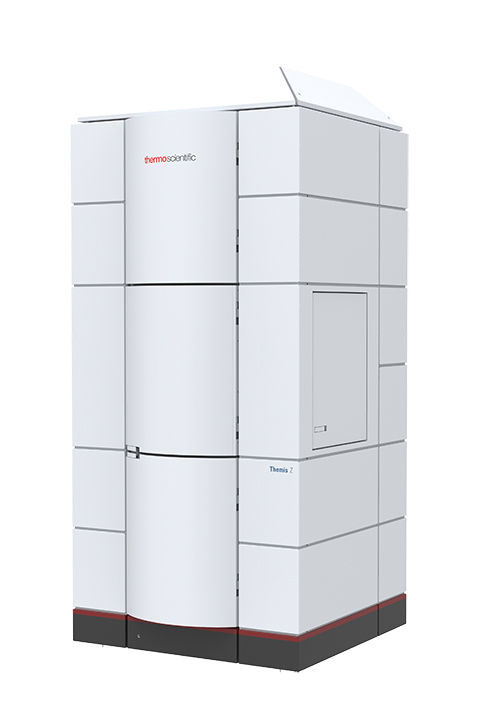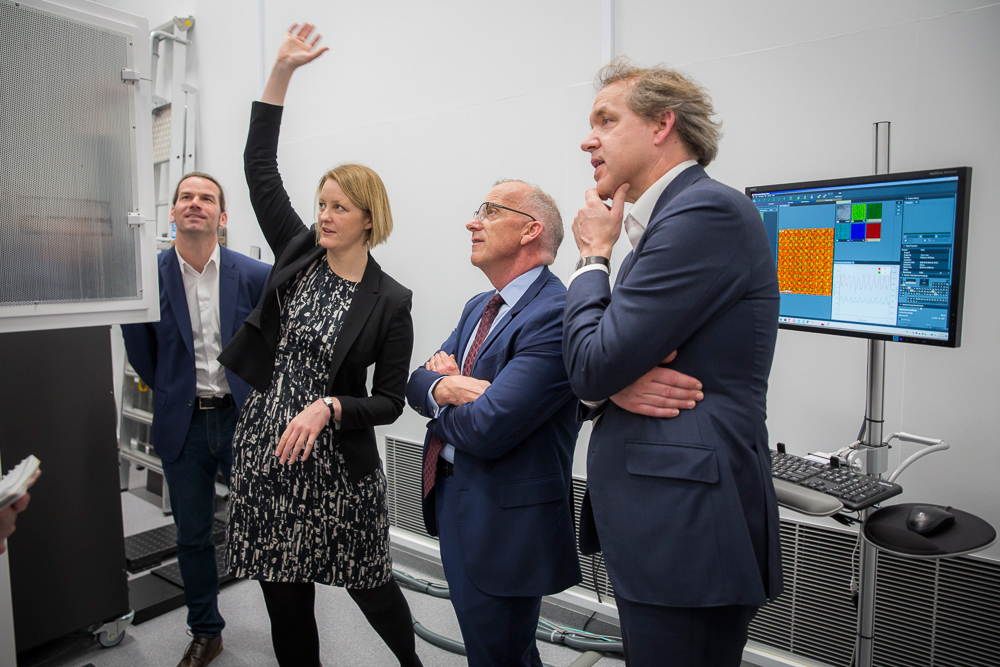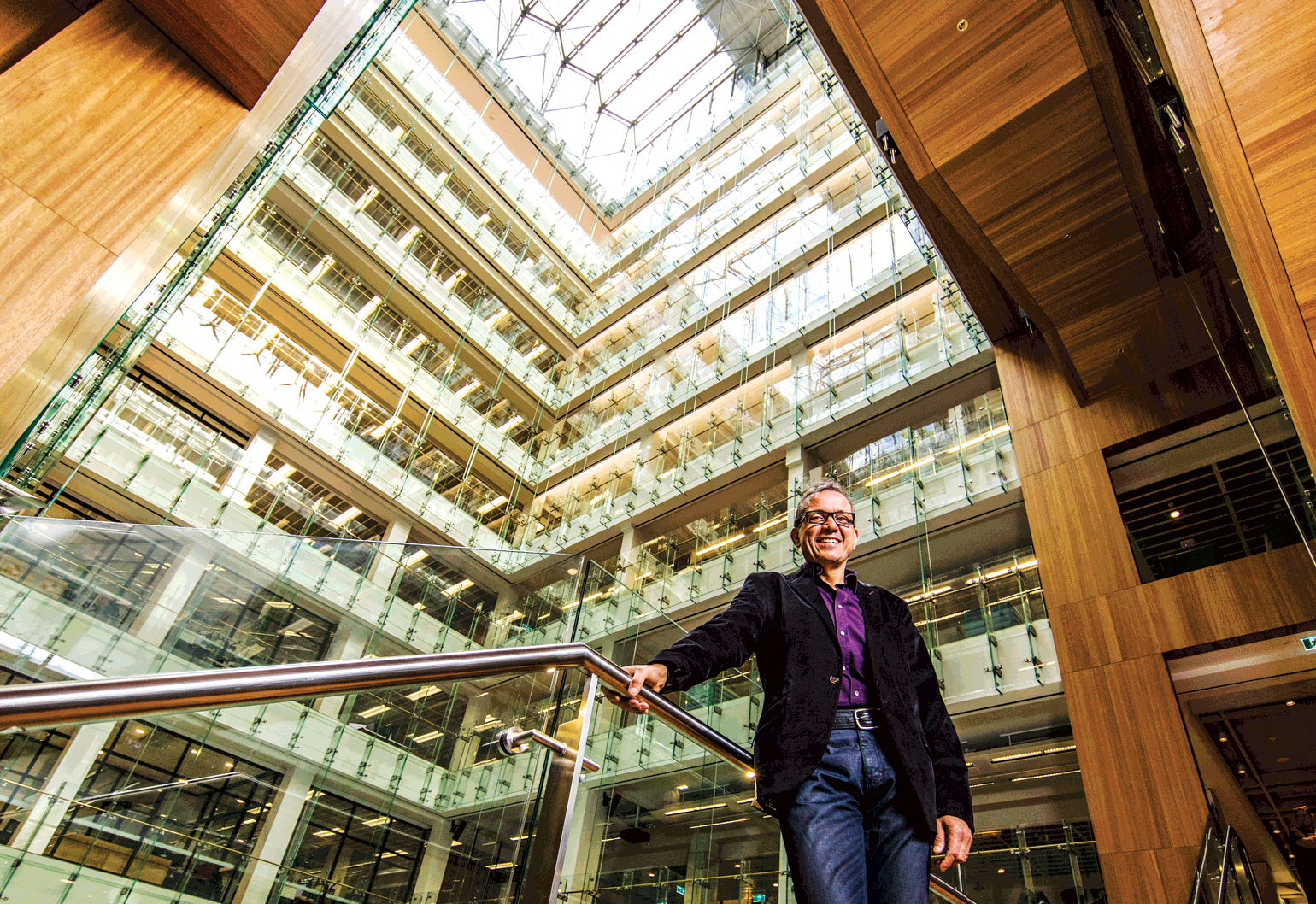Two Nobel laureates launched what has been dubbed “Australia’s most advanced electron microscope” at the University of Sydney’s Nanoscience Hub this week.
The 4.5 m tall Thermo Fisher Themis-Z transmission electron microscope is so powerful it can capture objects that are mere picometres in size – or one trillionth of a metre.
“It can see down to levels of about 0.06 nanometres, which is about half the size of a hydrogen atom,” said New South Wales Chief Scientist and Engineer Professor Hugh Durrant-Whyte at the launch event.
But being able to peer into the spaces between atoms does more than satisfy our curiosities about the universe at its smallest scale. Being able to distinguish individual atoms permits researchers to manipulate them, said Professor Julie Cairney, a director at the Australian Centre for Microscopy and Microanalysis.
“We can now properly determine the position of atoms within structures, and even the forces between them,” she said.
“It’s at that level that we engineer the nanoparticles that can deliver drugs to specific locations in people’s bodies, and it’s at that level that we develop the structures that are required for new photovoltaics or quantum computers.”

Precision design
The design of the microscope is what allows it to capture such a high resolution, Cairney said – the highest spatial and spectral resolution of any microscope in Australia.

“It’s a transmission electron microscope that’s mono-chromated and double-corrected,” she explained.
“What that means is it transmits the beam of electrons through the sample, but it’s not just any old beam of electrons.”
The correction minimises the spread in the energy of these electrons, ensuring the rays are directed at exactly the same point.
“That creates the most perfect beam of electrons possible and gives us a phenomenal resolution,” Cairney said.
“It’s really the ultimate nanotechnology tool.”
To keep the microscope functioning at peak performance, the laboratory housing it has been constructed to create a stable environment. The device sits on a floating concrete slab that stands independent to the rest of the building to minimise vibrations, and it is located as far from the building’s elevators as possible to minimise magnetic interference. The air and acoustics of the laboratory are extremely stable as well.
Open for business
The microscope is openly available to all Australian researchers, Cairney said, whether they came from a university or industry. And there are already projects with ideas for how it can be put to use.
“The team at the ARC Research Hub for Advanced Manufacturing of Medical Devices are going to use it to develop coatings they can put onto stents, which will allow surgeons to correctly insert them,” Cairney said.
“Others are going to use it for transformational additive manufacturing research for the design of new light alloys for battery materials and other energy technologies.”

Professor Joachim Frank, the 2017 winner of the Nobel Prize in Chemistry, highlighted as part of the launch the benefit the instrument would have for the university and for Australia.
“I’ve done most of my work computationally, so the data somehow came from somewhere – from people who were actually able to operate the microscope. I’ve been fortunate enough to have always been at institutions that had very well-functioning infrastructure,” he said.
Professor Dan Shechtman, a 2011 Nobel winner, urged local researchers to use the device in international collaboration.
“When you have these wonderful pictures, what does it mean to the real questions you want to solve?” he asked.
“Investment in such a wonderful laboratory is important not only in order to solve your problem, but in order to train the experts on these machines, and these experts can go and collaborate around the world and bring new knowledge.”




Does the university allow private researchers to rent use of the microscope?